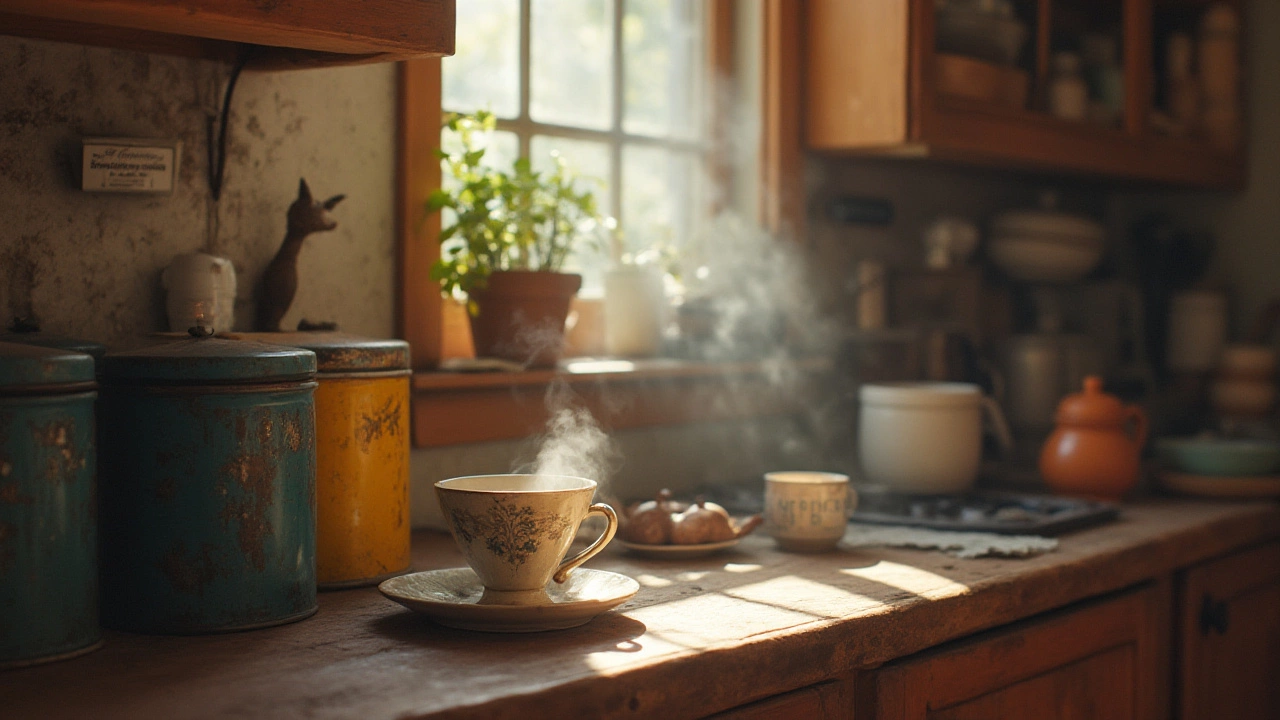10 Year Old Tea: What It Is, How to Store It, and How to Drink It
Ever wonder why some tea lovers rave about tea that’s been aging for ten years? It’s not a gimmick – older tea can develop flavors you won’t get from a fresh leaf. Think of it like a fine wine: time, the right environment, and the right kind of tea turn a simple brew into something rich, mellow, and surprisingly complex.
Not every tea can handle a decade of storage. The ones that thrive are usually heavily oxidized or fermented varieties – Pu‑erh, certain black teas, and some oolongs. These teas have a natural structure that lets them mellow and deepen over the years. Light green or white teas, on the other hand, tend to lose their brightness and turn bitter if left too long.
How to Store Your 10‑Year‑Old Tea
Storage is the biggest factor in whether a ten‑year‑old tea stays good or goes bad. First, keep it cool. A pantry that stays around 60‑70°F (15‑21°C) is ideal. Second, protect it from light – a dark cupboard or a tin with a tight seal works great. Third, control humidity. Aim for 60‑70% relative humidity; too dry and the leaves become brittle, too damp and you risk mold.
Use airtight containers made of metal, glass, or high‑grade ceramic. If you buy a bulk batch, divide it into smaller jars so you only open what you need each time. This limits exposure to air and moisture, keeping the tea’s flavor intact for years.
Tasting a Decade‑Old Tea
When you finally brew that ten‑year‑old leaf, go easy on the temperature and steep time. A water temp of 185‑195°F (85‑90°C) and a 3‑5 minute steep usually brings out the mellow notes without making it astringent. You’ll often notice earthy, woody, or even sweet caramel tones that weren’t there when the tea was young.
Start with a small amount – a teaspoon for a cup – and taste the first sip. If it feels flat, add a second steep. Many aged teas get richer with each pour, just like a good tea bag can be steeped multiple times. Pair it with simple foods: plain nuts, mild cheese, or a piece of dark chocolate. The flavors will complement each other without overwhelming the tea.
If you notice a sour or moldy smell, the tea has likely gone bad. Good aged tea should smell earthy, slightly sweet, and clean. A splash of water won’t fix a spoiled batch, so it’s best to discard it and start fresh.
Buying a ten‑year‑old tea can be a fun treasure hunt. Look for reputable sellers who share the tea’s harvest year, storage conditions, and tasting notes. Many specialty shops label their teas by year, just like vintage wine, making it easy to pick a bottle that fits your taste.
In short, a ten‑year‑old tea isn’t just a novelty – it’s a chance to explore deeper flavor layers, practice proper storage, and enjoy a drink that’s been shaped by time. Treat it with care, brew it gently, and you’ll get a sip that’s both nostalgic and surprisingly fresh.
Wondering if you can safely drink a decade-old tea? Learn the truth about tea shelf life, storage, risks, and even hidden benefits of aged tea.
View Details

